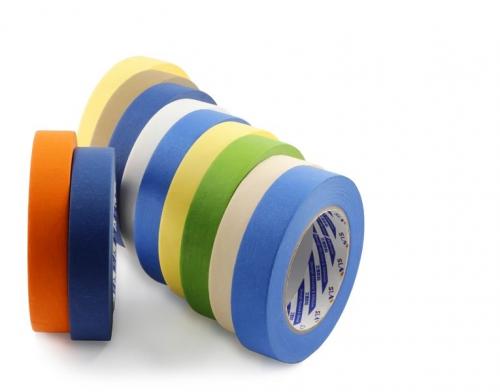Mastering the Art of Painting with Painter's Tape

When it comes to painting
projects, achieving clean lines and precise edges can make all the difference
in the final result. That's where painter's tape comes into play. Painter's
tape, also known as masking tape, is a valuable tool that every DIY enthusiast
and professional painter should have in their arsenal. In this article, we'll
delve into the world of painter's tape, exploring its uses, benefits, and tips
for mastering its application.
Understanding Painter's Tape:
Painters tape is a type of pressure-sensitive tape made from a
thin and easily tearable paper material. One side is coated with a special
adhesive that allows it to stick firmly to surfaces without causing damage or
leaving behind residue when removed. This makes it ideal for temporarily
masking off areas that should not be painted.
Benefits of Painter's Tape:
- Clean Lines: One of the primary benefits of
painter's tape is its ability to create crisp, clean lines between painted
and unpainted surfaces. This is essential for achieving professional-looking
results, especially when painting walls, trim, or intricate designs.
- Prevents Paint Bleed: Painter's tape acts as
a barrier, preventing paint from bleeding under its edges and onto
adjacent surfaces. This ensures that your paint job remains neat and
precise, without any unsightly smudges or smears.
- Removes Easily: Unlike regular masking tape,
Painters tape is designed to be easily removable without damaging the
underlying surface or leaving behind adhesive residue. This makes cleanup
a breeze and allows for quick and hassle-free removal once the paint has
dried.
Tips for Using Painter's Tape:
- Surface Preparation: Before applying
painter's tape, ensure that the surface is clean, dry, and free of dust or
debris. This will help the tape adhere more effectively and prevent any
paint seepage underneath.
- Proper Application: Apply the painter's tape
firmly but carefully, ensuring that it lies flat against the surface and
there are no air bubbles or gaps. Press down on the edges to seal them
securely.
- Remove Promptly: Once you've finished
painting and the paint is dry to the touch, remove the painter's tape
promptly but gently. Pull it away at a 45-degree angle to minimize the
risk of tearing or damaging the paint finish.
Painters tape is a simple yet indispensable tool for anyone
undertaking a painting project. Its ability to create clean lines, prevent
paint bleed, and remove easily makes it a must-have for achieving
professional-quality results. By following these tips and incorporating
painter's tape into your painting routine, you can elevate your projects to new
levels of precision and perfection. So next time you pick up a paintbrush,
don't forget to reach for the painter's tape and unlock its full potential in
mastering the art of painting.
Post Your Ad Here
Comments